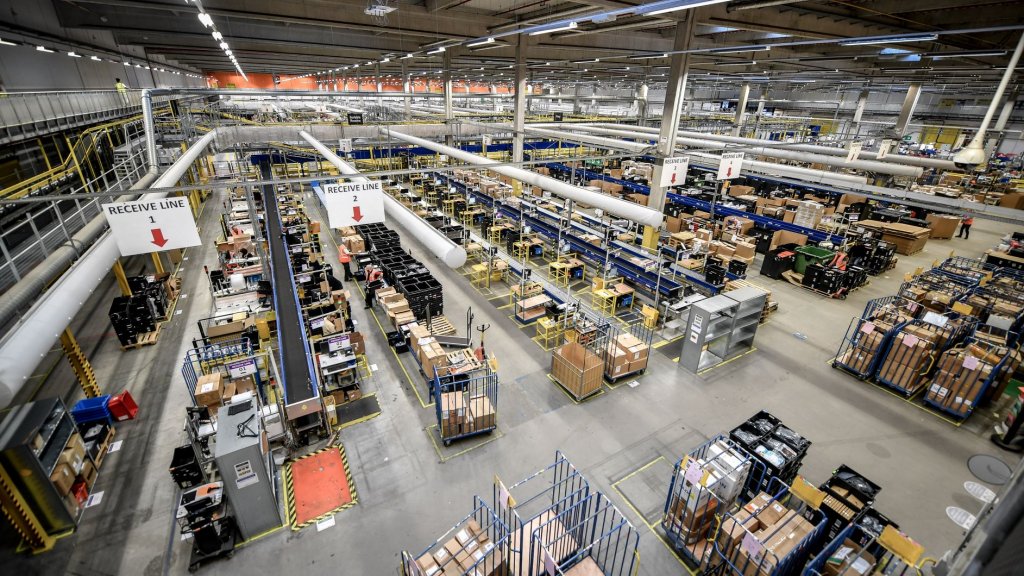Navigating Market Shifts: Strategies For Warehouse Optimisation

The impact of COVID-19, along with economic uncertainty and geopolitical events, have seriously affected logistics and supply chain operations, including warehouses. Moreover, changes in consumer behaviour have led to some industries experiencing unprecedented demand, while others are struggling to survive.
Rather than waiting for the situation to stabilise, businesses should take proactive steps to secure and future-proof their warehouse operations. For businesses navigating global challenges, while meeting the growing demands of customers, here are four strategies to consider.
Warehouse automation
Automation has become an essential competitive factor in most operations – and warehousing is no exception.
Automated storage and retrieval systems (AS/RS) are among the most popular and impactful options for warehouse automation. These flexible, storage-dense systems are designed to store and retrieve products and inventory on demand using goods-to-person technology and can be tailored to specific requirements. The benefits include more efficient use of floor space, increased throughput and order picking accuracy, and reduced labour and associated costs.
The technology varies substantially and can, for example, include robots, carousels, mini-loads, stockers, and shuttles. An AS/RS system can also integrate with data-driven warehouse control systems (WCS) to intelligently control operations.
Another automation solution is autonomous mobile robots (AMRs). These robots use sensors and machine vision to navigate warehouse environments safely and perform tasks alongside human workers without predefined routes or instructions. Many businesses use AMRs for tasks that would be harmful or impossible for human workers.
While it may seem like a significant upfront cost for a company, warehouse automation has plenty of payback potential, with a return on investment typically achieved within a few years.
Another aspect that provides value for money is that machines never tire or sleep. This means so-called ‘dark’ warehouses can potentially stretch operating hours to run 24/7.
Micro fulfilment centres
Customer demand for same-day, next-day deliveries and click-and-collect options is compelling companies to modify their omnichannel distribution strategy. To expedite delivery times, European retailers, notably those in the grocery sector, are using smaller warehouses for local order fulfilment. These are known as micro fulfilment centres (MFCs).
In theory, an MFC can be situated anywhere. They can be inside a physical store, in an adjacent building or inside a ‘dark’ warehouse where inventory and products are staged, but only employees have access.
Beyond shorter local delivery times, MFCs enable improved inventory control, quicker and easier returns, and, to some extent, reduced costs and emissions associated with transportation.
The two types of micro fulfilment centres that will likely shape the future of logistics are the dark store concept and the regular storefront, where a dedicated space in the back acts as the MFC. As the micro fulfilment centre is closer to the customer, companies often let them choose whether to pick up the order or get it delivered.
Although micro fulfilment is undoubtedly an innovative trend, some companies still depend on manual labour despite its limitations in the number of products picked per hour. A warehouse also only has a certain amount of shelf space. However, investing in a flexible and modular automated solution can boost storage capacity significantly.
Automation-as-a-Service
It’s a common misconception that investing in a warehouse automation solution is prohibitively costly and complex for all but the largest businesses. Even small companies can reap the benefits, especially with a leasing model called Automation-as-a-Service (AaaS) offering a lower risk, lower cost path to improved warehouse operations.
Automation-as-a-Service also allows younger or smaller companies to adopt automation in the early stage of their development, facilitating rapid and sustainable growth without the burden of complex operations. By subscribing to an automated solution, they will free up funds to grow and innovate in other areas.
The flexibility and modularity of an AS/RS like AutoStore makes it ideally suited to AaaS since it can fit into almost any space and is easy to scale up or down when necessary. Other automation solutions are often more permanently tailored to their customers and, therefore, not suited for an AaaS model.
Some third-party logistics (3PL) service providers may also offer AaaS to their clients. However, AaaS should be considered a shorter-term solution since renting a warehouse automation solution will eventually be more expensive than owning it.
Data-driven warehouses
Utilising real-time data and deploying advanced technologies like machine learning and artificial intelligence (AI), the warehouse can gain valuable insights into process optimisation, inventory management and even customer behaviour.
One of the keys to building a smart supply chain is understanding the balance benefits of both AI and using data in real-time, as these can help to be acutely aware of the movements within supply chains, ensuring a greater understanding of the bigger picture, for example, through automated alerts for any capacity issues or anticipating potential downtime, the latter being a major gap in the armour of many companies.
Integrating these insights into the business intelligence framework can significantly boost overall operations.
Actionable insights to generate from warehouse data include:
- Capacity planning: Data-driven software can create automated alerts to notify warehouse managers of potential capacity constraints and allocate appropriate resources. For instance, if the data indicate a strain on the loading dock, the manager can send a request to employees at picking ports to assist.
- Simulations: Advanced software tools play a vital role in capacity planning by creating digital twins that simulate unique warehouse scenarios.
- Money-saving predictive maintenance: Operators can identify potential problems before they cause downtime or equipment failure, resulting in a higher uptime for automated warehouse equipment.
- Resilient transport planning: Warehouse analytics software enables smart decision-making beyond traditional boundaries, ensuring smooth, efficient transport operations in the end-to-end supply chain.
- Employee engagement through gamification: Data-driven software can create fun and engaging experiences to boost employee morale and recognition. For example, running a monthly competition to determine who can pick the most orders from a specific location.
Staying ahead of the curve
The future of the warehouse is exciting. Staying abreast of the latest trends and innovations positions companies to thrive in a fast-moving but often uncertain business environment.
Whether incorporating automation, robotics, AI, or other technologies, numerous opportunities exist to improve efficiency and deliver superior customer service. The key to unlocking these opportunities is to embrace change and stay ahead of the curve.
Gavin Harrison is UK Sales Director at Element Logic




